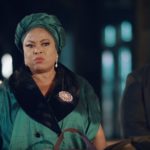Several colonial-era films were made in Africa in the early 1900s. One of the first known examples is “The Visit of Alake of Abeokuta”. It is a documentary shot around 1904. At the time, only the western filmmakers were able to make films in Africa. The movies were also used to gratify the colonial masters while circulating a misconception about Africa. The foreigners had the full control over the film production and distribution at the time. The African people had no means to tell their side of the story. This generation of filmmakers are now working on changing these misconceptions.
The movies made in Nigeria at this time mostly featured western casts. However, a few Nigerians also played roles in some of these movies, including Orlando Martins. He would, later on, become one of Nigeria’s biggest actor at the time.
Palaver (1926) – One of the Most Famous Colonial-Era Films
“Palaver” was one of the most popular colonial-era films of its time. It was told from the colonials perspective and emphasizes the role of the British in civilizing Africa. It may also have simply been intended as a film about love and rivalry. However, it succeeded more in stereotyping Africans as barbarians and devil worshippers.
“Palaver” follows the story of a British District Officer and a tin miner in a conflict of interest. The rivalry between them eventually leads to a war. Ironically this happens in a time when the British were in Africa to advocate civilization rather than chaos. The two parties also end up fighting for the love of a woman, where only one can win.
The present-day Bauchi and Plateau states, then known as Sura and Angas, were the locations used in shooting “Palaver”. Academy Award winner Geoffery Barkas was the producer of “Palaver”.
Thanks to today’s filmmakers, the stereotyped appearance of Africa through films are starting to change. “Palaver”, as well as many other colonial-era films, are still available for viewing online at colonialfilm.org.uk.
Sanders of the River (1935)
Portraying Africans as though they were helpless without the colonials was very common during the colonial era. The British ruled the natives with brutality on the grounds and claimed that they were doing the African tribes a favour. “Sanders of the River”, shot in 1935, clearly shows this mentality. The native African chief, Basambo, is the main focus in the movie. He is forced to be submissive to the British regent in order to win his favour.

Paul Robeson, the African-American actor who played Bosambo, later disowned the movie due to this. His reason for accepting the part initially was that he believed it would dignify Africans and portray them positively. He was therefore very disappointed when he realized that the film justified imperialism. An alteration during editing on Paul Robeson’s character, Bosambo, presented him as a slavish follower of British colonial rule. At the time of the release, “Sanders of the River” delivered exciting entertainment, but it was also another propaganda and a stereotypical portrayal of the African continent. This embarrassed Paul Robeson and made him furious.
The movie also featured Orlando Martins as well as Jomo Kenyatta (who would later become the first president of Kenya) as an extra. A few accounts claim that the locations of the movie were set around East Africa, which is also why Jomo Kenyatta appeared as an extra.



